During the Chinese New Year of 2018, the three overseas Confucius Institutes of China University of Political Science and Law (CUPL) celebrated the Spring Festival through various activities with foreign friends, spreading traditional Chinese culture and holiday blessings to distant corners of the world.
Bangor, UK: Chinese New Year in Welsh
From February 16 to 18 (local time), the “Wales-China Festival” and a series of relevant activities were held in the Pontio Arts Center at Bangor University of Wales. The dragon dance was performed at the Center by the Confucius Institute at Bangor University jointly built by CUPL (also known as “the CI at Bangor”). The cheerful drumbeats and colorful Chinese dragon got many local residents stopping by. The CI at Bangor also set up a number of workshops on Chinese calligraphy, traditional musical instruments, Beijing Opera Facial Makeup, Chinese tea art, martial art, Tai Chi, etc. The audiences were encouraged to participate in the workshops to have a personal experience of the traditional Chinese culture in various forms.

(Group photo of the workshops)
On February 24 (local time), the CI at Bangor held a grand Spring Festival gala in the Bangor Cathedral. The gala was attended by local residents of North Wales, local Chinese people, university students and other people from all walks of life. The gala was strongly supported by the Bangor City Council, the Confucius Institute for Traditional Chinese Medicine at London, Our Lady’s RC Primary School and North Wales Chinese School. Derek Hainge, Mayor of Bangor, and John Hughes, President of Bangor University were invited to attend.
Celebrating performances are brilliant and full of traditional Spring Festival flavor, including lion dance, singing, instrument performance, dancing, Chinese martial arts, etc. Angharad Rhodes, a student of the CI as well as a well-known Welsh child star, was invited to host this event. At the beginning of the gala, the Chinese national intangible cultural heritage - water drum dance, a dancing of Chinese ethnic minority with exciting dance style and rhyme as well as deep national culture connotation, gave the audience a visual feast and aesthetic enjoyment. Subsequently, a Chinese singing and dancing performance “Gao Shan Qing” (the blue mountain), performed by CI teacher Zhao Xian and her students, won rounds of applause of the audience. What’s more, yangko (a Chinese rural folk dance) “Kai Men Hong” (a good start) and modern dances, performed by teachers of CI at Bangor, stood out from many performances for their joyous and rhythmic movements. Finally, teachers of the Confucius Institute for Traditional Chinese Medicine at London presented the “Dialogue between Martial Arts and Dance”, a perfect integration of Chinese martial arts, tai chi, folk dance and ballet, catching the eyes of the audience by its ingenious arrangement and shocking performance. The whole performance ended with the speech of Derek Hainge, Mayor of Bangor, and the chorus “Xiang Qin Xiang Ai” (love each other) by teachers of the CI and the audience.
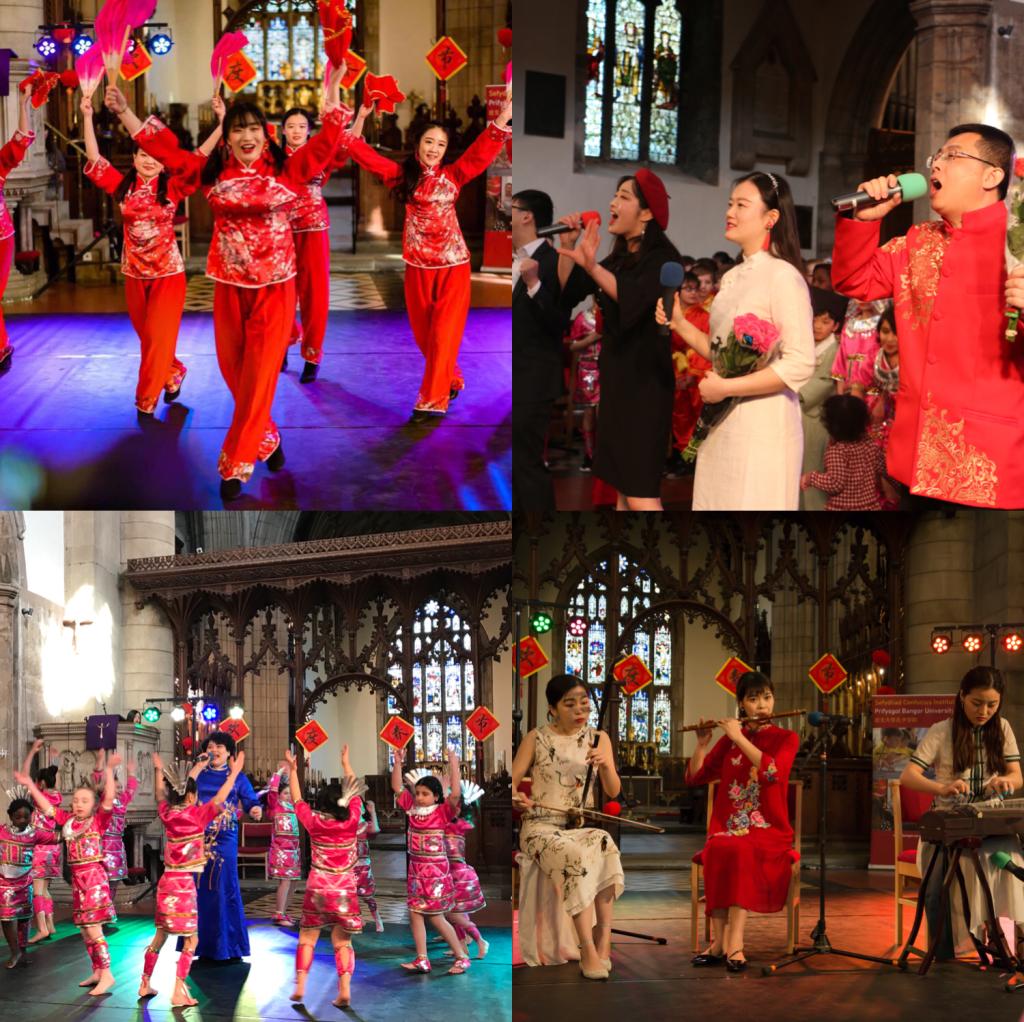
(Singing, dancing, and instrument performance)
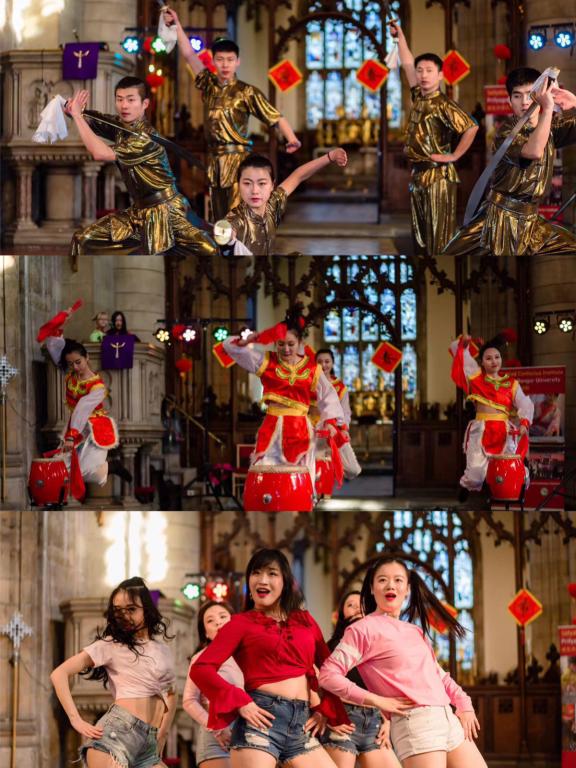
(Chinese martial arts and dance performances)
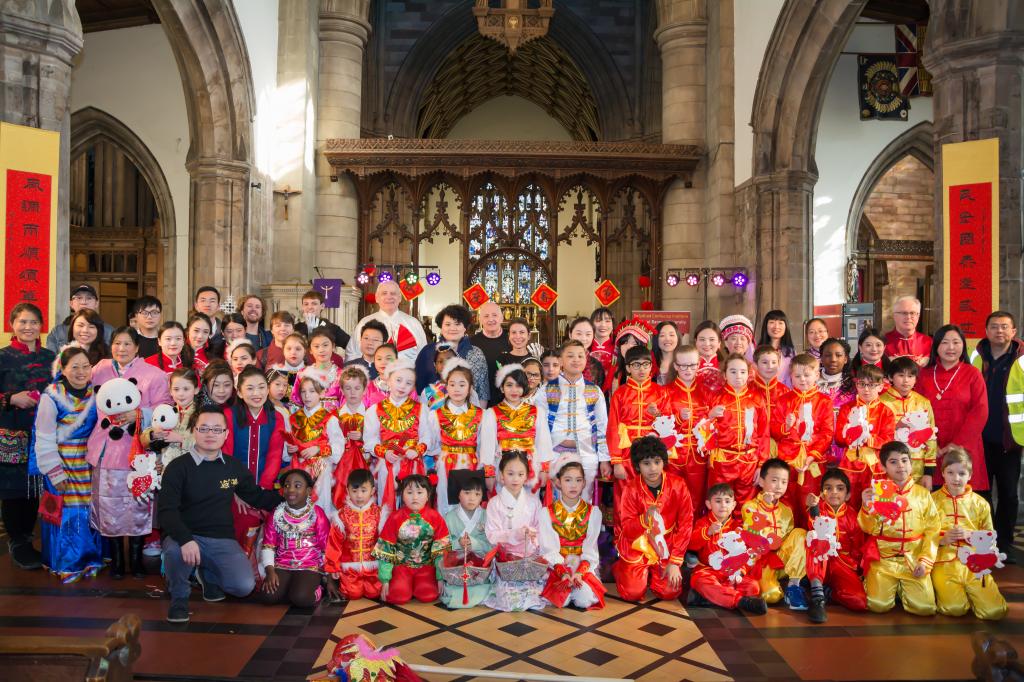
(Group photo of the gala)
Bucharest, Romania: Chinese Cultural Exhibition at the Chinese Language School
On February 14 (local time), the Confucius Institute at the University of Bucharest (CI at Bucharest) celebrated the Spring Festival at Bucharest International School. Over 400 participants, including teachers of the CI, teachers, students and their parents of Bucharest International School, as well as other guests, attended the celebration. Sinan Kosak, President of Bucharest International School, Tan Yuxiu, wife of Chinese Ambassador to Romania, Zhao Li, Cultural Counselor of the Chinese Embassy to Romania, and Dong Jingbo, Chinese Co-Director of the CI at Bucharest attended the ceremony and made speeches. The venue of the celebration was decorated with beaming lanterns and streamers. The Chinese lion dance lit up the audience’s enthusiasm and the students’ affectionate poetry recitations, martial art, singing and dancing performances all vividly presented the splendid and lasting charm of Chinese culture.
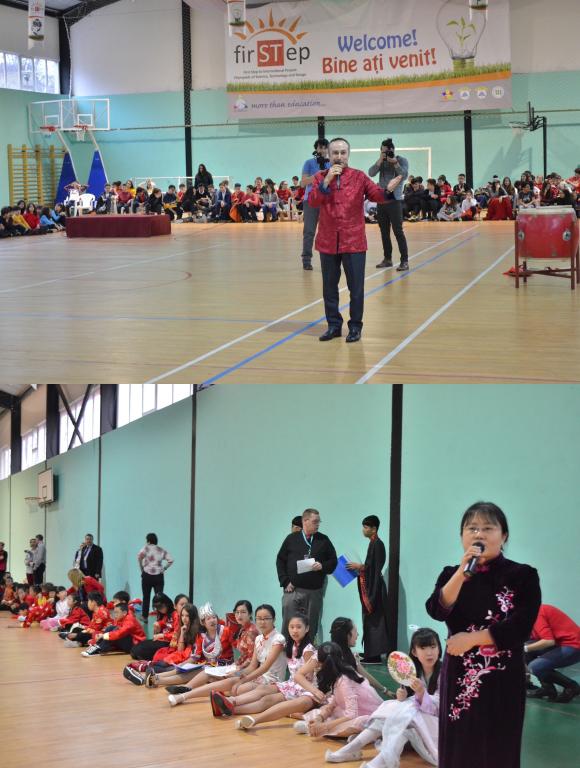
(Sinan Kosak, President of Bucharest International School and Dong Jingbo,
Chinese Co-Director of the CI at Bucharest respectively made speeches.)
After the performance, students from the International Schools came to Chinese Cultural Experience Zone with excitement. There were a lot of children in the exhibition areas of calligraphy, painting, Q&A game, and so on. And many of them came to participate, experience and learn about the Chinese culture. Some students learned calligraphy; some did paintings on Chinese fans; some joined the Q&A game. All the experiential activities were so interesting and that the fans was in short supply. The calligraphy experience zone attracted a large number of participants. Once they got their name written in calligraphy, they looked so excited as if they have hit the jackpot.
In another teaching site, EUROED Elementary School, Chinese language teacher Fang Yuchen led students to experience Chinese calligraphy and folk activities. Fang taught them to paint dogs with brushes because 2018 is also the Year of dog according to the Chinese lunar calendar. After preparing Chinese art paper, writing brush and ink for the students, Fang briefly introduced the ink and paper used in Chinese painting and calligraphy. Then Fang taught them how to hold the writing brush before the students began grinding Chinese ink. The students showed great interests in grinding Chinese ink that they could not wait to have a try when Fang was still explaining. Subsequently, Fang made a demonstration on the blackboard in person, and the students learned Chinese calligraphy step by step. After painting puppies, they began to paint other animals based on their own imagination. Although students’ small hands and faces were stained with ink in the process, they all enjoyed the event and said they would like to experience it again in the future.

(Teacher Fang led students to experience the process of grinding Chinese ink.)
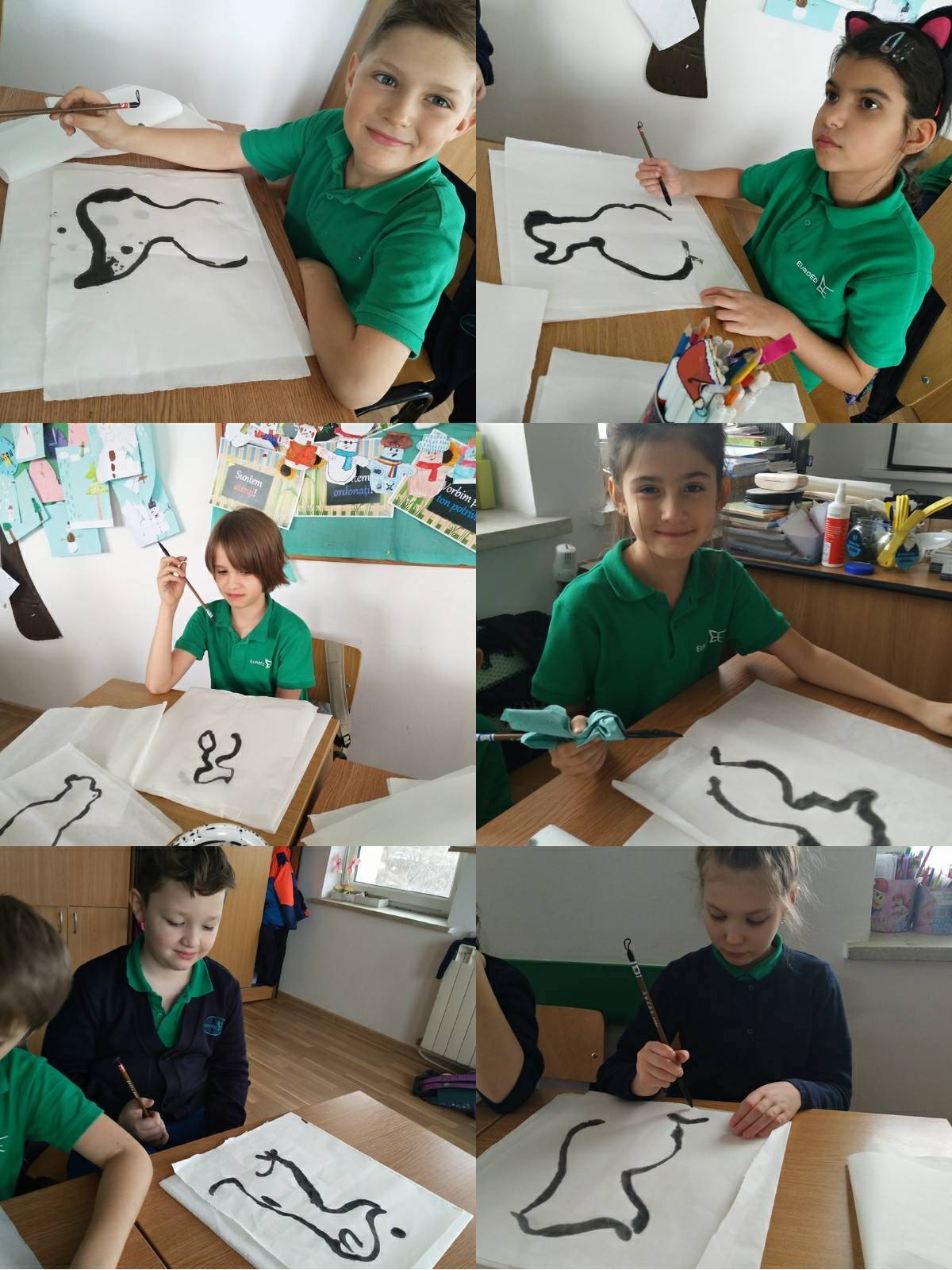
(Students were painting puppies.)
From February 19 to 22 (local time), Colegiul National Gheorghe Lazar, one of the teaching sites of the CI at Bucharest, held a four-day Chinese cultural event on four topics: Chinese New Year, Beijing Opera, Chinese calligraphy and culture of Chinese Zodiac.
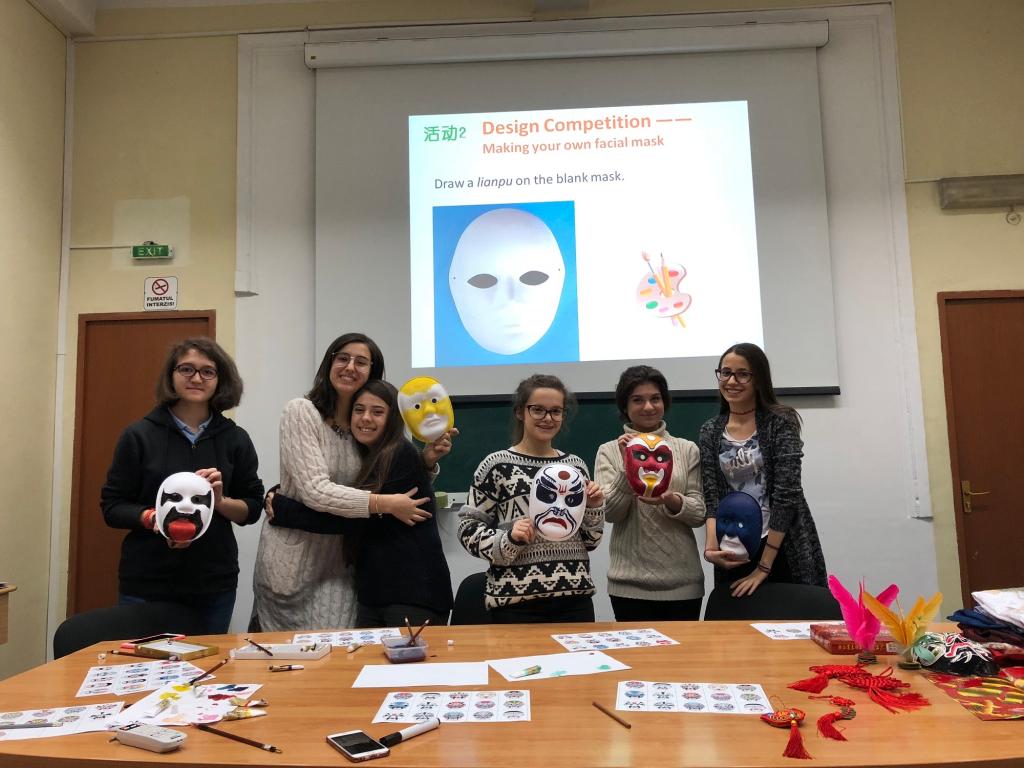
(Students showing their work of Beijing Opera Facial Makeups.)
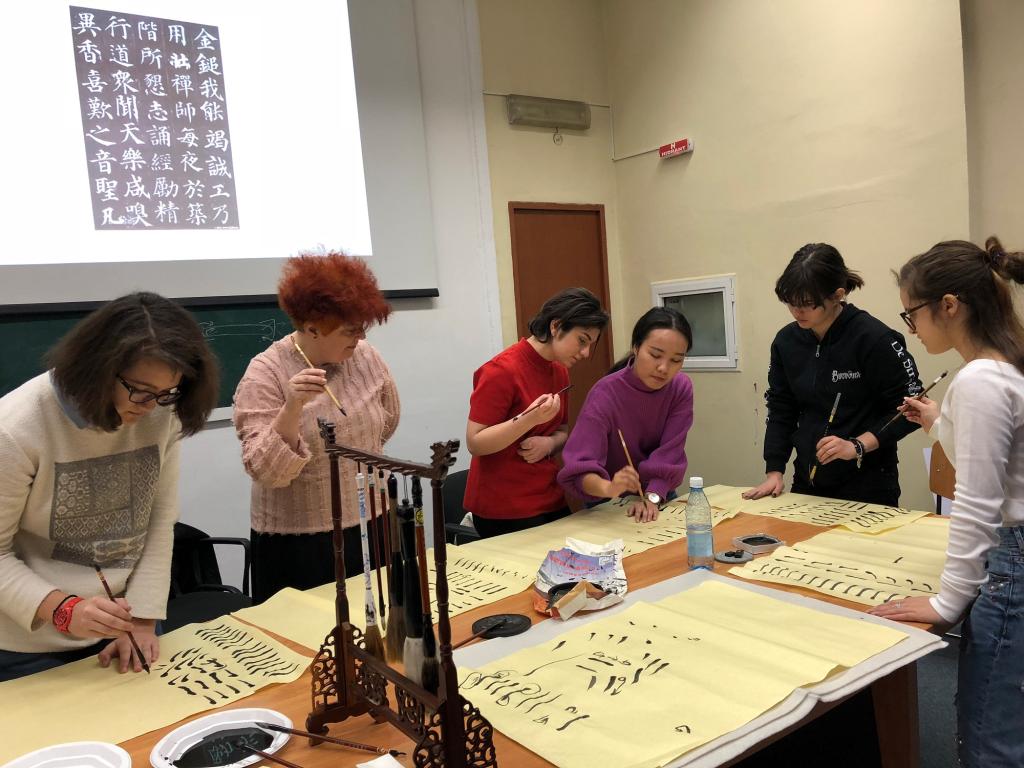
(Calligraphy teacher Liu Wencui was teaching on site.)
In addition, the Photo Exhibition on the “Belt and Road” Initiative, which opened on February 2, was still ongoing during the Spring Festival. This exhibition would last for one month. It showed the important connotation, achievements and far-reaching significance of the “Belt and Road” Initiative to the Romanian people in a direct and vivid manner, and would promote people-to-people connectivity between China and Romania.
Barbados: New Ambassador takes office and “Fish and Dragon Festival” is held
On February 16 (local time), also the Chinese Spring Festival, the Confucius Institute at the Cave Hill Campus of the University of the West Indies, Barbados (the CI at Barbados), held the calligraphy and cultural club activity. Qu Wenjia, Chinese volunteer teacher at the CI, taught local students how to write Spring Festival couplets. Seal character (Zhuan Shu) is an ancient style of Chinese calligraphy with pictographic and stylized features. Auspicious words such as “Good Luck”, “All Wishes Come True”, “Happy New Year” not only have lucky meanings but also have significant stories behind every Chinese character. For example, “吉”(lucky) is like an ancient temple, and people going to temples for blessing is regarded as an auspicious event. “春” (spring) symbolizes that plants grow sturdily after sunshine. Students all thought Chinese characters were very interesting and had a different theoretical system from the alphabetic letters. Students wrote the couplets on red papers and enjoyed the charm of Chinese characters through every stroke.
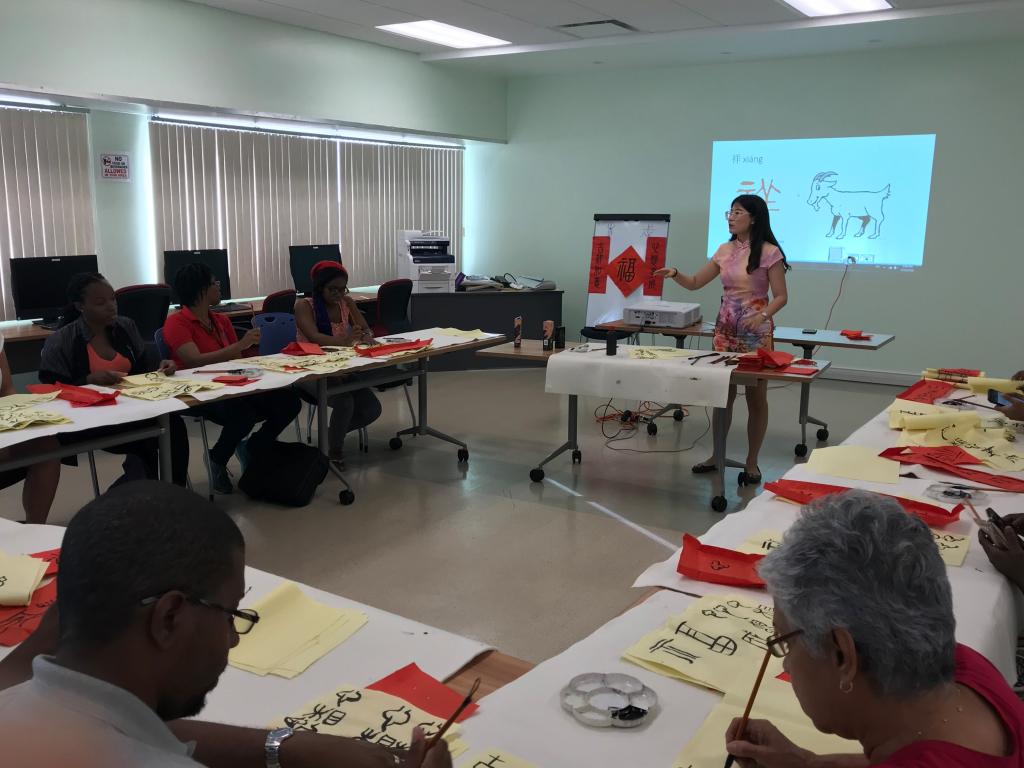
(Display of hand-written Spring couplets )
On February 23 (local time), the staff of the CI at Barbados attended the “Reception of Ambassadors and Cultural Night of Spring Festival 2018”. There were around 200 persons attending this event, including Yan Xiusheng, Chinese Ambassador to Barbados, Sandra Mason, Governor of Barbados, Marston Gibson, Chief Justice of Barbados, Maxine McClean, Minister of Barbadian Foreign Affairs and Trade, Chinese Embassy representatives in Barbados, and other participants from all walks of life. At the Reception, teachers and volunteers of the CI at Barbados dressed in traditional costumes introduced the customs of Chinese Spring Festival and brought Chinese traditional culture such as paper cutting, calligraphy, tea art and Chinese knot to the participnats. In front of the paper-cutting display booth, Zhang Chunxue and Lian Xiaojuan, teachers of the CI at Barbados, meticulously prepared the paper cutting of “福” (blessing) and dogs. Governor Mason and Minister McClean all picked up the scissors to learn paper cutting with great interests. Chinese volunteer teacher Qu Wenjia had been learning calligraphy since her childhood, and she wrote down “友谊” (friendship) that night and presented it to Governor Mason as a gift. Li Renyan, teacher of the CI at Barbados, introduced the spirit of Chinese tea art to guests and conducted a live show on tea art. Many guests asked for another cup of tea after drinking it. In addition, they also wanted to learn more knowledge of tea art in detail.
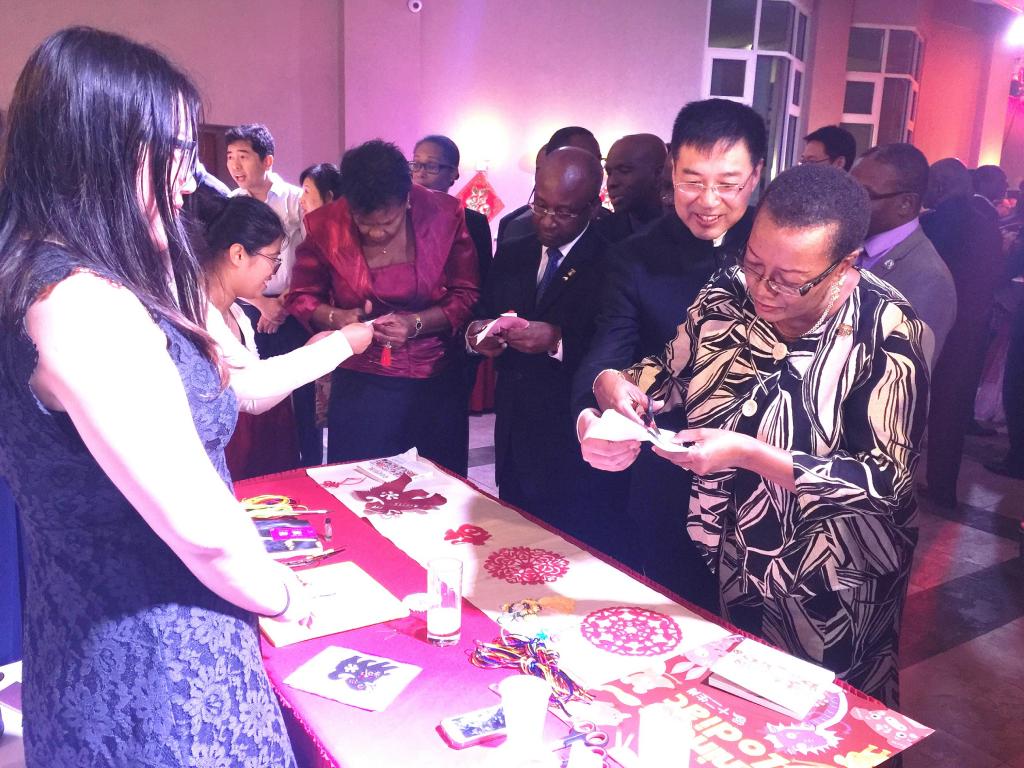
(Foreign Minister was experiencing Chinese paper-cutting culture.)

(Governor was drinking tea and experiencing tea culture)
On February 24, the “Fish and Dragon Festival”, a major festival for China and Barbados, was celebrated grandly at the Barbadian National Stadium. In the name of this festival, “fish” represents Barbadian famous specialty - flying fish, which is also one of most common and favorite food of local people, while, “dragon” represents China. The CI at Barbados undertook the mission of displaying Chinese culture and cultural exchange during this event. The CI set up four booths to show Chinese tea art, calligraphy, paper-cutting and Chinese knot to the participants.
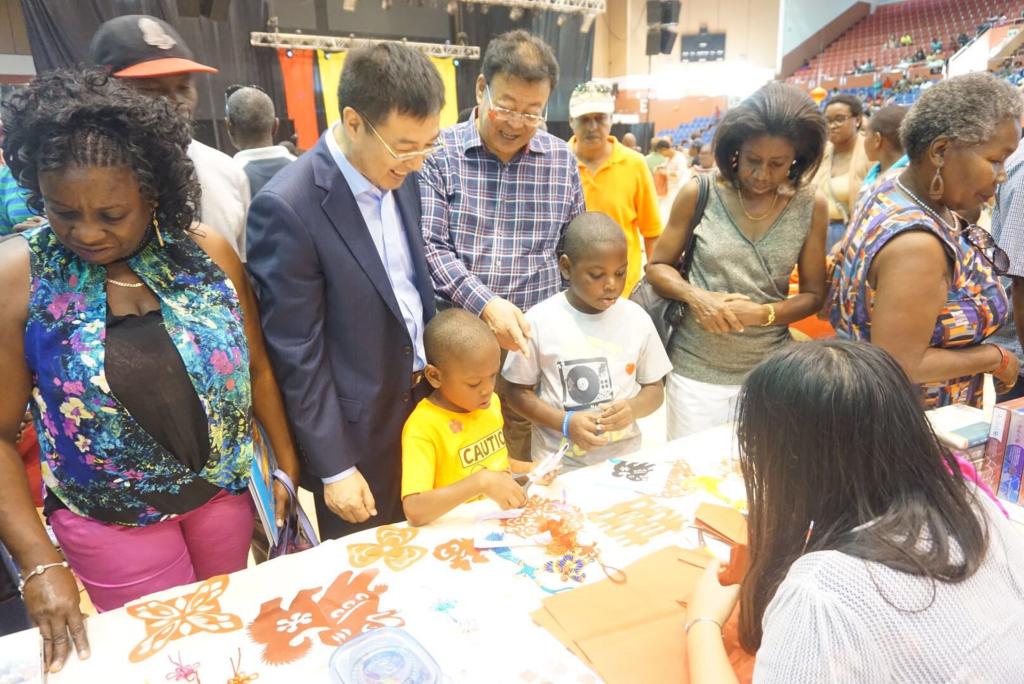
(Ambassador of China to Barbados was in front of the paper-cutting booth.)
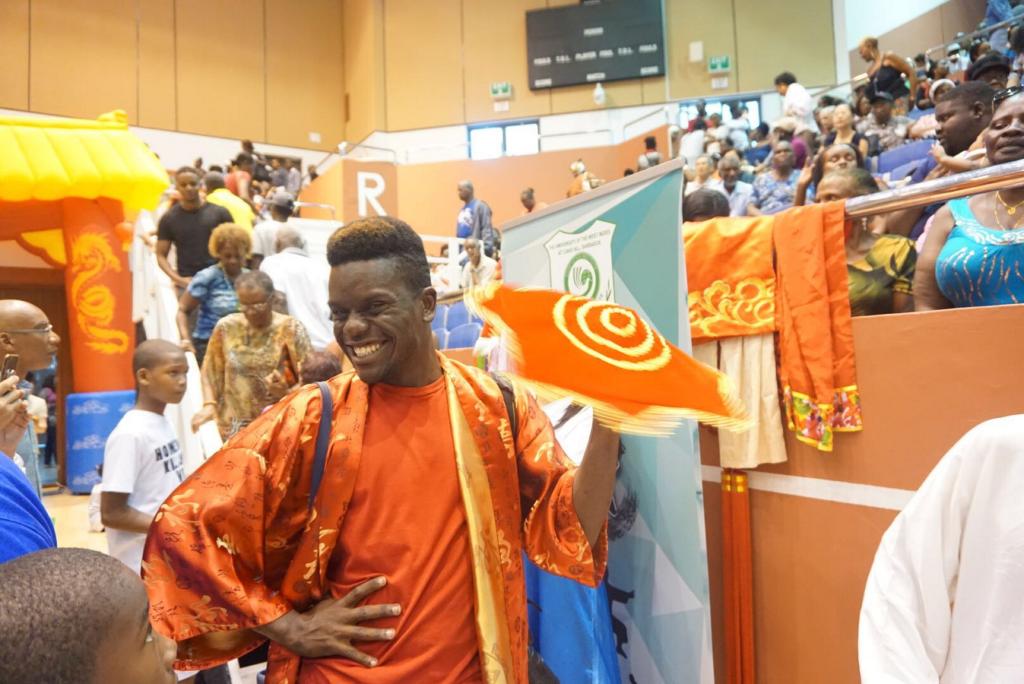
(Foreign friends was playing “handkerchief flower”)
The Spring Festival is a traditional festival in China and several Asian countries. In recent years, it has become an increasingly important festival for people around the world. It is the hardwork of the staff in the three Confucius Institutes, jointly built by CUPL and foreign universities, during the holiday that made the series of Chinese New Year cultural activities become the cultural bond and emotional window linking China with the host countries of the Confucius Institutes. The three overseas Confucius Institutes are bringing “Chinese Style” to the world.
Attachments: the links of media reports on those activities of the three Confucius Institutes.
The report on Chinese New Year activities of the CI at Bangor by British local media:
http://www.northwaleschronicle.co.uk/news/16045955.Dragon_parade_and_gala_marking_Chinese_New_Year_draws_the_crowds_in_Bangor/?from=timeline&isappinstalled=0
The report by Bucharest International School on Chinese New Year’s activities held by the CI at Bucharest: http://rri.ro/zh_cn/2018%E5%B9%B42%E6%9C%8816%E6%97%A5_%E5%A4%A7%E5%B9%B4%E5%88%9D%E4%B8%80%E7%89%B9%E5%88%AB%E8%8A%82%E7%9B%AE-2576892
The report by Romanian News Agency on the Photo Exhibition on the “Belt and Road” Initiative held by the CI at Bucharest:
https://www.agerpres.ro/cultura-media/2018/02/02/o-expozitie-de-fotografie-cu-imagini-din-china-si-tari-aflate-pe-noul-drum-al-matasii-vernisata-la-parlament--48312
The report on the website of the Chineses Embassy in Barbados on “Reception of the Ambassador and Cultural Night of Spring Festival 2018”
http://bb.china-embassy.org/chn/xwdt/t1537841.htm

